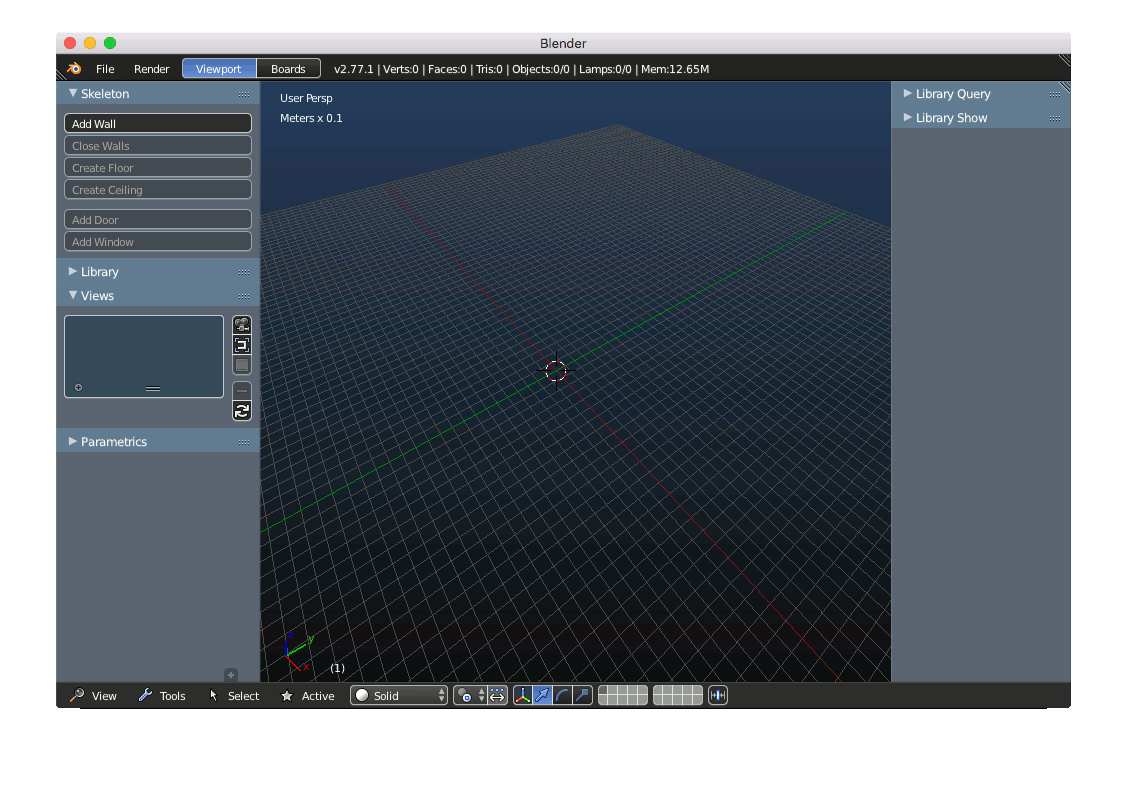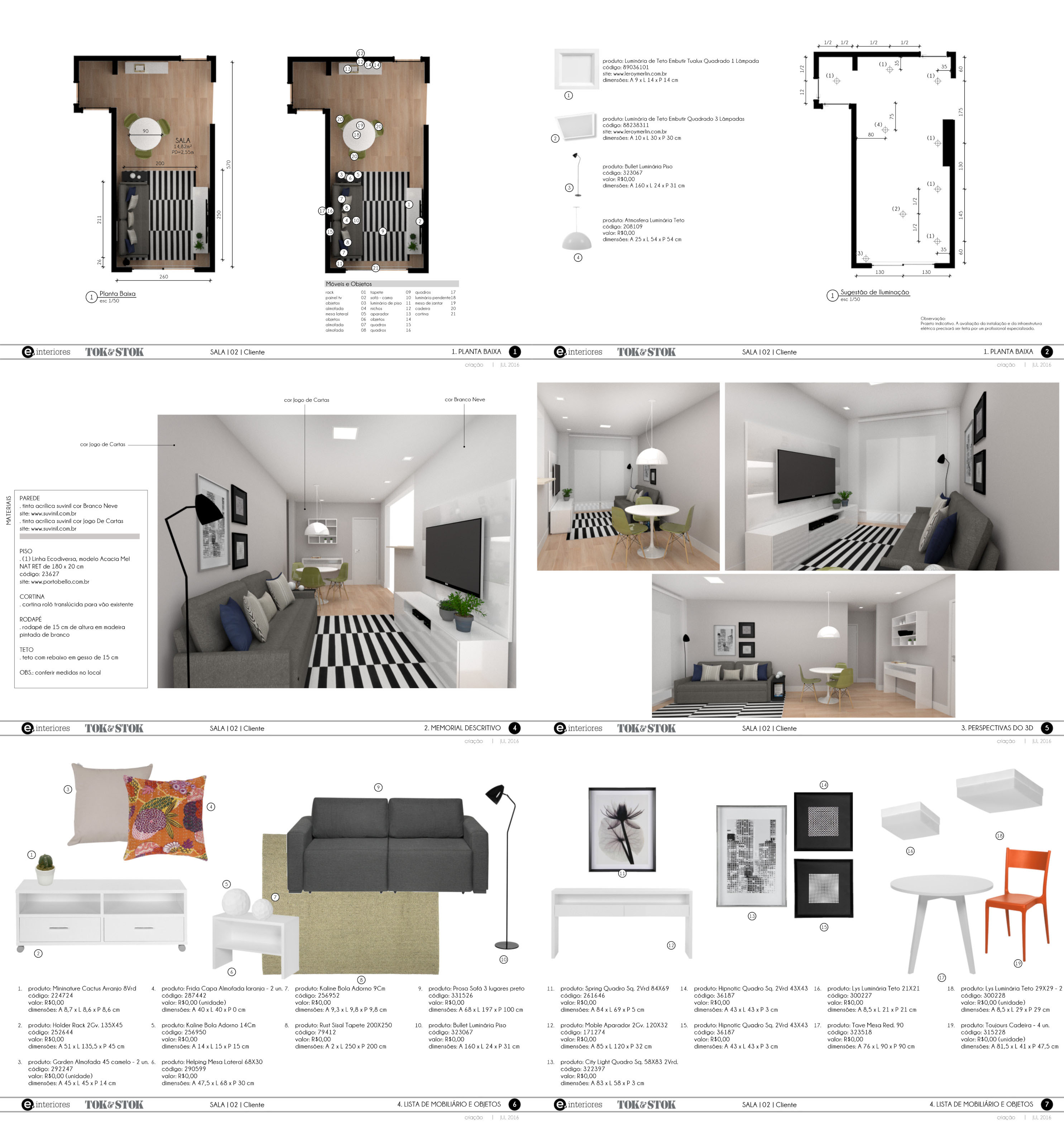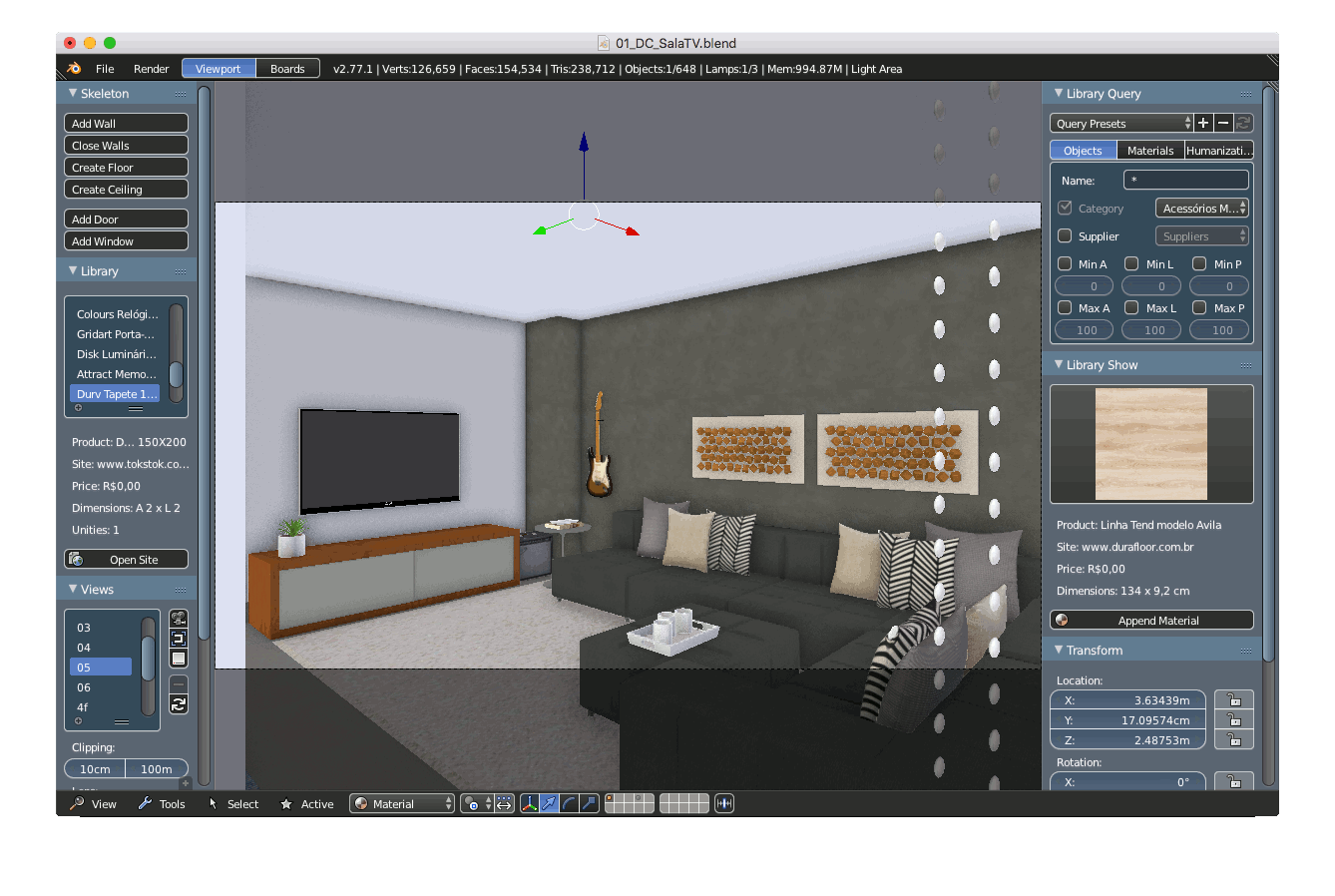By: Dalai Felinto, Blender Developer
Meet e-interiores. This Brazilian interior design e-commerce startup transformed their creation process into an entire new fashion. This tale will show you how Blender made this possible, and how far we got.
We developed a new platform based on a semi-vanilla Blender, Fluid Designer, and our own pipelines. Thanks to the accomplished results, e-interiores was able to consolidate a partnership with the giant Tok&Stok providing a complete design of a room, in 72 hours.

A long time ago in a galaxy far far away
During its initial years, e-interiores focused on delivering top-notch projects, with state of the art 3d rendering. Back then, this would involve a pantheon of software, namely: AutoCAD, SketchUp, VRay, Photoshop.
All those mainstream tools were responsible for producing technical drawings, 3D studies, final renderings, and the presentation boards. Although nothing could be said about the final quality of their deliverables, the overall process was “artisanal” at most and extremely time consuming.
Would it be possible to handle those steps inside a single tool? How much time could be saved from handling the non-essential tasks to the computer itself?

New times require new tools
The benefits of automatization in a pipeline are known and easily measured. But how much thought does a studio give to customization? How much can a studio gain from a custom-tailored tool?
It was clear that we had to minimize the time spent on the preparation, rendering and presentation. This would leave the creators free to dedicate their time and sweat over what really matters: which furnitures to use and how to arrange them, which colors and materials to employ, the interior design itself.
A fresh start
The development paradigm was as such:
- Vanilla Blender: The underneath software should stay as close to its consumer version as possible
- Addon: The core of the project would be to create a Python script to control the end to end user experience
- Low entry barrier: the users should not have to be skilled in any previous 3D software, specially not in Blender
The development started by cleaning up the Blender Interface completely. I wanted the user to be unaware of the software being used underneath. We took a few hints from Fluid Designer (the theme is literally their startup file), but we focused on making the interface tied to the specifics of e-interiores working steps.
You have the tools to create the unchanged elements of the space – walls, floor, …, the render point of views, the dynamic elements of the project, and the library. Besides that, there are a whole different set of tools dedicated to create the final boards, add notations, measurements, …
A little bit about coding

Although I wanted to keep Blender as close to its pristine release condition as possible, there were some changes in Blender that were necessary. They mostly orbited around the Font objects functionality which we use extensively in the boards preparations.
The simplest solution in this case was to make the required modifications myself, and contribute them back to Blender. The following contributions are all part of the official Blender code, helping not only our project, but anyone that requires a more robust all-around text editing functionality:
- Text Object Vertical Alignment
- Fix region_2d_to_origin_3d not working with ortho view
- Increase range of Font object textboxes
- Fix: OSX – Cmd + A doesn’t work for Font objects editing
- Integrate font objects copy/paste with system clipboard
- Fix: Empty > Image not working in some hardwares
With this out of the way we have a total 18,443 lines of code for the core system, 1,458 of model conversion and 2,407 for database. All of this ammounts to over 22 thousand lines of Python scripting.
Infrastructure barebones
The first tools we drafted are what we call the skeleton. We have parametric walls, doors, windows. We can make floor and ceilings. We can adjust their measurements later. We can play with their style and materials.

Objects library
We have over 12,000 3d models made available to us by Tok&Stok. The challenge was to batch convert them into a format Cycles could use. The files were originally in Collada, and modelled and textured for realtime usage. We then ditched the lightmaps, removed the support meshes, and assigned Cycles-hand-made materials based on the object category.

Part of this was only possible thanks to the support of Blender developer and Collada functionality maintainer Gaia Clary. Many thanks!

More dynamic elements
Curtains, Mirrors, marbles, blindex . . . there a few components of a project that are custom-made and adjusted on an individual case basis.

Boards
This is where the system shines. The moment an object is on the scene we can automatically generate the lighting layout, the descriptive memorial, and the product list.

The boards are the final deliverable to the clients. This is where the perspectives, the project lists, the blueprints all come together. The following animation illustrates the few steps involved in creating a board with all the used products, with their info gathered from our database.

Miscellaneous results
Finally you can see a sample of the generated result of the initial projects done with this platform. Thanks to Blender’s script possibilities and customization we put together an end-to-end experience to our designer and architects.




